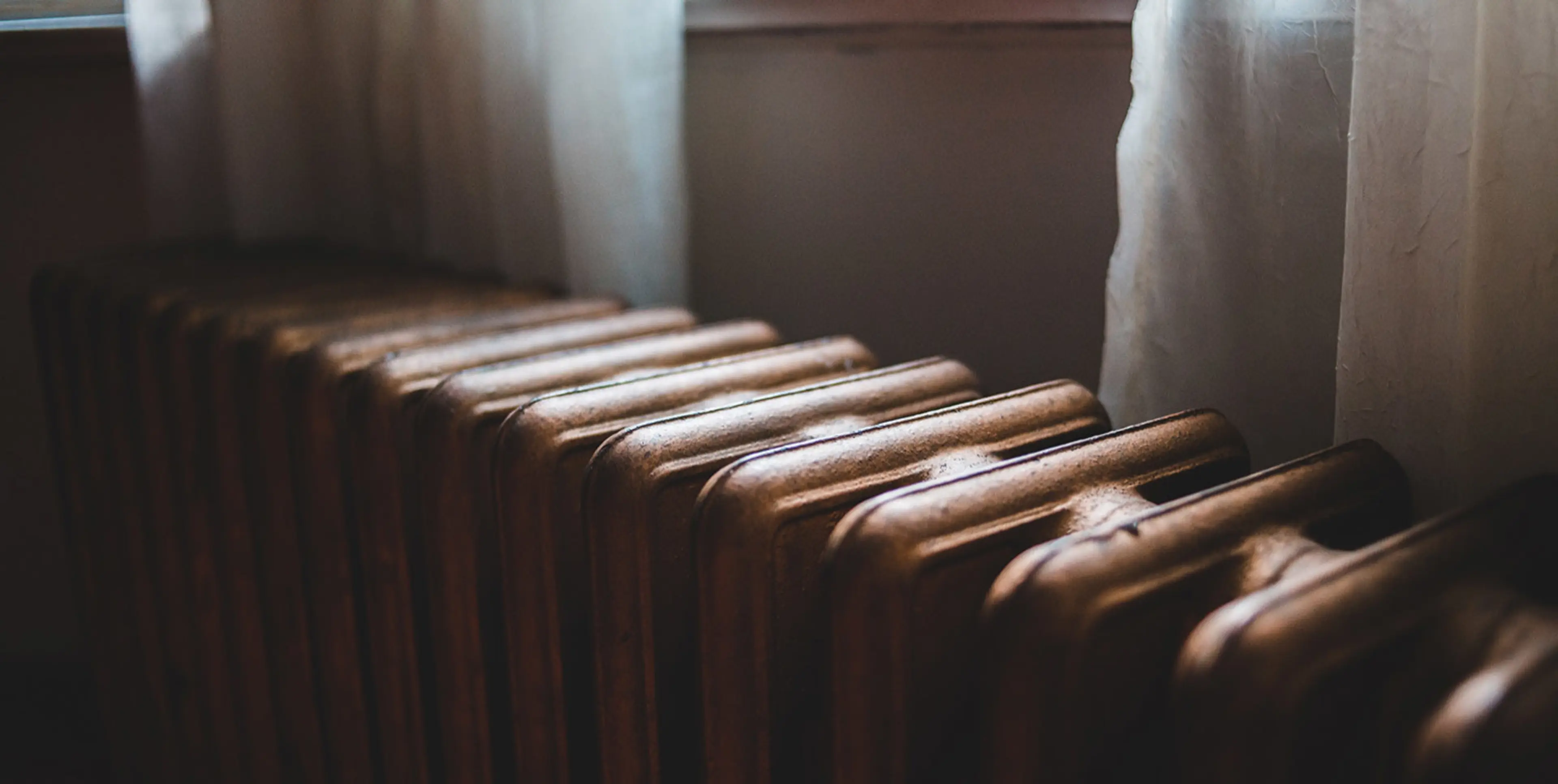The UK’s home gas boilers emit twice as much CO2 as all power stations combined. Therefore, any meaningful action in the fight against climate change must involve rapidly decarbonising our heating network. Air source heat pumps can heat our homes without burning fossil fuels, meaning they represent a one of the most important pieces of personal action in this decarbonisation effort.
But making the switch from a traditional gas boiler is bound to throw up questions – is my home suitable for an air source heat pump? What is the installation process? Will I still receive the same level of heat? What about my gas cooker? We answer these questions below, meaning you are fully informed before making this change with the potential to result in a big difference. Or check out our quick summary video...
Your home is likely to be most suited to a heat pump if...
1. It uses electric heating Heat pumps use the external heat from outside air, making it much more efficient and therefore cheaper than solely electric heating.
2. You have underfloor heating Underfloor heating not only retains heat well but covers a much larger area of the house than a radiator. As a result, it does not need to get as hot to reach the same level of warmth in the home. Heat pumps also have a lower flow rate than gas boilers, meaning that heat is more consistently supplied and therefore stays trapped for longer. This is the opposite of a gas boiler, which fires on and off as required, delivering heat in bursts. As a result, your heating will be running more efficiently and at a lower temperature while still providing a similar level of heat and comfort.
3. You are off the gas grid If you are currently off the gas grid or live in a rural area where you may rely on oil - an air source heat pump acts the perfect environmentally friendly alternative. Switching away from your current heating method to a heat pump will not only bring financial savings but reduce your impact on the environment as oil is both expensive and produces greenhouse gases when burnt.
4. Your home has solar panels If you have installed solar panels then you are already making great strides towards a low carbon home. The addition of heat pumps can have even more of an impact. They complement each other well, as there will be times when the electricity input for your heat pump is being generated by yourself, for free.
Key things to bear in mind before installing an air source heat pump
Make sure you have enough space for the heat pump This won’t be a big problem if you have a garden or back yard. Heat pumps are roughly the size of a small suitcase so you will need to find a space for it to be fitted along an outside wall. This is most likely to be at the back of your house, meaning the heat pump will sit like an air conditioning unit.
Installation takes one to two days, so plan ahead Installing a heat pump is not as straightforward as replacing a boiler. It will require installing a water tank, then the heat pump and then connecting the two. Sometimes access to the loft is required. As a result, it can be great to combine installing a heat pump with wider home improvement works. If this isn’t possible, be mindful of some disruption to your home and plan accordingly.
Don’t wait for your boiler to break before installing a heat pump Swapping a gas boiler for a heat pump is always going to reduce your carbon emissions, so you don’t need to wait for the boiler to stop working to make the switch. It can happen right now if you want to. You also need to bear in mind that there can be a lead time for getting a heat pump, so you don't want to wait for the boiler to pack up before getting one. If you do, then you could be without heating during the transition period (meaning you could even end up buying a gas boiler to get you through, which would be a huge shame).
You may need to install larger radiators To deliver the same amount of heat and comfort that you have become accustomed to you might need larger radiators in some rooms. A good installer will check all of this for you, using precise calculations to recommend the right size for you. If someone gives you a quote without giving you a proper survey of which rooms need new radiators to maintain a good level of heating, avoid them! Depending on the size of the room, some radiators won't need to change at all, others a small amount and in some cases, they may need to be up to two times bigger to deliver the same amount of heat as a traditional gas boiler.
How to get an air source heat pump
Now that you know why you should get a heat pump, (to reduce your carbon emissions and, in many cases, save money on your electricity bill), it's time to find out how. The key thing is to choose an MCS installer (you can search using the ‘find the installer‘ tool in the link). This is the gold standard body for renewable energy installation, and therefore comes with all the necessary protections. An option that is likely to become available in the future is getting your heat pump from an energy supplier that is providing heat pumps. We’re excited by the ambition shown by Octopus Energy. They’re currently leading the way, having agreed to invest £10m into R&D around heat pumps. Octopus also working to reduce the cost of the installation process and employ 1,000 new heat pump installation engineers. Alongside this, a series of government grants have been announced to incentivize people to switch to heat pumps. From April 2022 onwards, there will be a grant available of £5,000 towards the cost of a heat pump. Exact details of how to apply are yet to be announced but will be finalised nearer to the deadline. There is also the Domestic Renewable Heat Incentive in which you can receive quarterly payments for seven years based on the amount of renewable energy generated by certain heat pumps. However, this scheme will end in March 2022 so be sure to enquire as soon as possible.
Instances where an air source heat pump may not be ideal
Listed properties Installing a heat pump will require installing the pump on an outside wall, which is not possible for some listed buildings. Even in a non-listed house or protected area, you may not be able to have one if it is visible from the road.
You do not own the property Altering something as crucial as the heating system can only be sanctioned by the person who owns the property and given the cost, doesn’t make sense if it is not your long-term home. If you are renting, it is almost certain you will not get a say in whether a heat pump is installed.
There is no space for a (reasonably) large water tank Many homes already have water tanks, typically found in the airing cupboard. If this isn’t the case, you will really have to consider if your property has the room to install one of these. This is especially the case in flats, where the room may already be tight. It’s still worth talking to heat pump providers to see what options you may have.
Air source heat pump myths
They don’t work in cold temperatures This isn't accurate. Heat pumps are commonplace in Scandinavian and Nordic countries, where temperatures are routinely much lower than the UK. There does come a point when a heat pump stops working efficiently, but at temperature levels significantly below those we see in the UK.
Your water will be noticeably colder Hot water from heat pumps is colder, but never noticeably so. In fact, current gas boilers heat water to an unnecessarily high temperature, which is extremely wasteful, both in terms of money and carbon. The heat from gas boilers is hot enough to pose a risk of blistering the skin.
You can no longer cook with gas After you have installed a heat pump, you will still be able to maintain a gas hob and oven. Although this is the case, getting a heat pump presents the perfect opportunity to move away from gas cooking. Not only is having a naked flame inherently dangerous, gas particles are bad for your health, and can even lead to issues like childhood asthma. Modern induction hobs are as responsive and easy to use as gas hobs – so getting rid of gas once-and-for-all makes sense.
A heat pump is not suitable for me, what steps can I take to reduce my environmental impact?
If there is no way a heat pump can be installed in your property yet, you can still play your part in helping to decarbonise your heating. There are a few simple things you can do to ensure your home is correctly insulated and not leaking heat and wasting energy:
1. Cavity wall insulation - Make your brick walls work harder by filling the cavity with an insulating material that helps to keep the heat inside the home.
2. Loft Insulation - A well-insulated roof helps to keep the living space warm which can contribute to a lower heating bill, and therefore less energy usage.
3. Replace windows and doors - If the doors and windows are becoming tired and drafty then it might be worth replacing them, particularly with double glazing, to help keep the home as warm as possible without needing the heating on.
4. Go smart - Using smart heating controls like Nest and Hive can enable you to only use the energy you need, for example helping you to avoid heating your home when no one is in.
And in the meantime, if you want to help others to decarbonise their energy, you can check out our Clean Tech projects that champion alternative, sustainable energy methods. These projects have a positive impact on not only the environment, but people's lives. From Solar Cookers that harness the sun’s natural power to make cooking safer for refugees in Chad, to Biogas Cooking Equipment that enables rural homes in India to access renewable energy, our Clean Tech projects are helping communities around the world.











